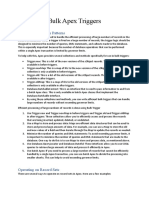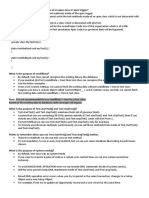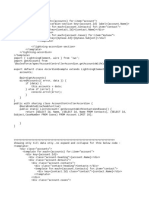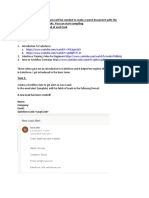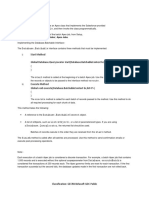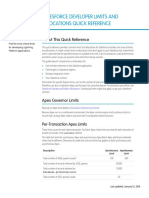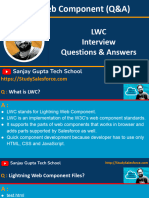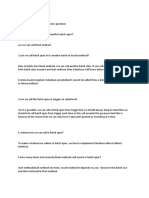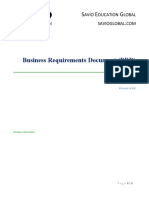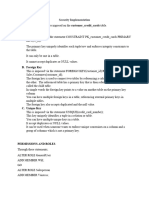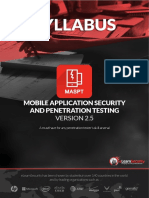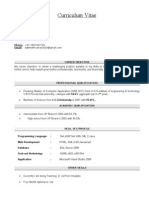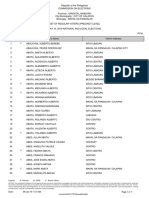100% found this document useful (1 vote)
252 views3 pagesAsynchronous Apex Overview
Asynchronous apex allows code to run in the background without blocking the user. There are four main ways to implement asynchronous apex: future methods, batch apex, queueable apex, and schedulable apex. Future methods run when resources are available in a separate thread. Batch apex is used to process large record sets in batches. Queueable apex allows calling one queueable class from another. Schedulable apex runs apex at a specific time.
Uploaded by
salesforce dcCopyright
© © All Rights Reserved
We take content rights seriously. If you suspect this is your content, claim it here.
Available Formats
Download as PDF, TXT or read online on Scribd
100% found this document useful (1 vote)
252 views3 pagesAsynchronous Apex Overview
Asynchronous apex allows code to run in the background without blocking the user. There are four main ways to implement asynchronous apex: future methods, batch apex, queueable apex, and schedulable apex. Future methods run when resources are available in a separate thread. Batch apex is used to process large record sets in batches. Queueable apex allows calling one queueable class from another. Schedulable apex runs apex at a specific time.
Uploaded by
salesforce dcCopyright
© © All Rights Reserved
We take content rights seriously. If you suspect this is your content, claim it here.
Available Formats
Download as PDF, TXT or read online on Scribd
/ 3








